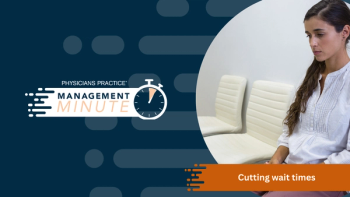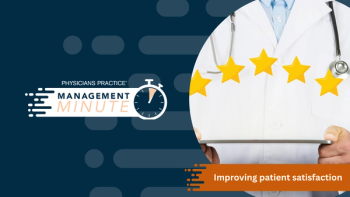
Three Ways to Improve Medical Office Space Layout
Decisions made during the design of medical office spaces have long-term consequences. Make sure you’re allocating enough time and attention to the process.
Decisions made during the design of medical office spaces have long-term consequences - for good and for ill. An effectively configured medical office can significantly increase the satisfaction of patients, physicians, and staff. It can also have dramatic effects on practice productivity and, therefore, profitability. Consider these three basic principles:
1. Compare initial costs to long-term benefits
In contemplating a major expense, it is natural to want to minimize the initial cash outlay and indebtedness. It is just as important to measure the long-term benefits and avoid false economies.
Exam rooms illustrate the point. Should adjacent exam rooms be mirror images of one another, or should they be identical? Mirror images reduce construction costs by having the plumbing for both rooms in a single wall. Functionally identical exam rooms allow physicians and their staffs to develop and take advantage of reflexive knowledge of the location of supplies and equipment.
Suppose a physician sees an average of twenty patients per day, and assume the identical layout saves a physician an average of thirty seconds per patient over the mirror image configuration. To be especially conservative, ignore the benefits of fewer mistakes in stocking the rooms and any gains in medical assistant productivity.
.5 minutes/physician X 20 patients/day = 10 minutes saved/day/physician
That is 50 minutes/week/physician, or
Three hours and 20 minutes/physician/month
At that rate, the productivity gains will quickly cover the extra plumbing costs and the benefits will last through the term of occupancy.
Initial costs are important and financial resources do not always allow for a long-term view. Often, however, significant long-term benefits are sacrificed for a relatively minor short-term economy.
2. Keep the traffic flowing in a single direction
The ideal office layout, which is not always achievable, is a loop that leads away from the reception area and back to it. If all the traffic is going in the same direction, traffic jams are eliminated and there is less chatter in the hallway. Patients need less direction and are more likely to keep moving.
Productivity is enhanced because physicians and staff save steps. A less obvious productivity benefit is that the physician is less likely to encounter a patient outside of the exam room and be drawn into a conversation.
It may sound as though I am suggesting that patients are cattle or parts on an assembly line. The opposite is true. Minimizing a physician's non-productive, time-wasting patient interactions in the hallway allows more time for focused attention on the patient in the exam room.
3. Have a separate entrance for use by physicians and staff
The obvious reason is to allow a physician to slip into or out of the office as needed. It is not attractive to waiting patients to see a physician arriving later than scheduled, and it is even harder to understand why she may not be able to immediately begin seeing patients.
Another reason for a separate entrance is the importance of a consistently professional demeanor in the practice. Disney describes it as “onstage” vs. “backstage.” While backstage, staff can laugh, talk about events of the weekend or plans for the evening, and not be concerned about the impression on patients. Once staff is onstage, the patients deserve their full attention. A separate entrance is clearly backstage, and makes it easier to remember that one is onstage in the reception area.
Architects are fond of saying, "Form follows function." What they generally mean is that good design is driven by a clear understanding of its purpose. Time spent in thinking about how the space should work is an investment that can pay handsome dividends. These three principles represent a small part of the task of designing medical office space. They are worthy of mention because they are often neglected.
Newsletter
Optimize your practice with the Physicians Practice newsletter, offering management pearls, leadership tips, and business strategies tailored for practice administrators and physicians of any specialty.








